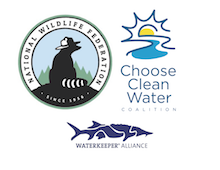Easy ways to help take care of rivers and streams
Despite the big challenges facing our water, we can all do lots of small things that together have big impacts. Here are just a few.
At Home
Pick up pet poop. Stormwater carries bacteria from the ground to streams.
Use less fertilizer on your lawn — or none at all. The nitrogen from fertilizer has the same impact as the nitrogen from pet waste.
Establish a no-mow zone near a stream or pond. Vegetated buffers reduce contaminants entering your waterway.
Aerate your lawn. Aeration softens the ground, absorbing more rain, and reducing runoff into our creeks and streams.
Pump your septic tank. A maintained septic system can reduce bacteria in my drinking water.
Out and About
Report problems. If you see or smell something that’s not quite right, notify your water utility or local authorities.
Pick up trash. Plastic bags and other junk on the street or trail eventually gets into water. When you go for a walk, get in the habit of taking a trash bag.
At Work
Close the dumpster lid. Rainwater combines with trash, then drains out the bottom finding its way into my river.
Sweep parking lot once a month. Stormwater carries bacteria, trash, and chemicals from the ground to my river.
Use low VOC products. Many products contain chemicals that may have adverse health and environmental effects.
On the Road
Bring a bag when you shop. Plastic bags are used once but take centuries to decompose; they break down into micro-plastics when they get into water.
Pump gas at night. Refueling emits vapors reactive to sunlight forming harmful Ground-level Ozone.
Get a tune up. A properly maintained engine reduces emissions and increases gas mileage — air pollution leads to water pollution!
In the Community
Volunteer to plant trees. Trees clean our air and our water.
Become a member of a conservation or watershed group. Meet new people while improving the environment.
Form a Care for Creation group. Guide a congregation to share in earth-keeping activities and cherish creation.
On the Farm
Test your soil. Crop fields may contain enough nutrients for this year’s crop. Less fertilizer = Less pollution.
Apply cover crops. Nitrogen fixing vegetation replaces nutrients while reducing wind and rain erosion.
Install a riparian buffer. Stabilizing Stream banks limits bank erosion and preserves agricultural soil.


